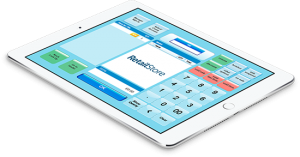It’s never going to be a perfect time to change your pos system, but knowing what to expect before you begin looking into systems is always a good thing. I have implemented many pos systems throughout my career, specifically to the liquor retail industry, and I’ve learned a few things I’d like to share.
1. Prepare your data
When preparing to move pos software or pos systems, the first thing to think about is your data. Even before you’ve started your search, it’s a good idea to start cleansing your data.
Migrating customer, supplier and inventory data can be challenging, so it’s important to plan how you’re going to transfer information from one system to the next. And cleansing data is a time-consuming job. Many customers think, “Oh I’ll just fix it on the new system”, but chances are, that doesn’t happen, and you continue to be bogged down by old, unused data. Make a plan- will you enter your data manually or import it in bulk? Ensure you know what the import and export capabilities are of your existing system and your new one.
Projects always succeed when the customer and the vendor are prepared, and are both willing to put in the effort required.
2. Consider your ideal insights that you’d like to get from the pos system
A lot of customers think that when moving over to a new system, it’s the vendor’s job to tell them what reports they need, or that you’ll see what’s in the system once it’s live. But it’s important to know what kind of reports you need, and how you segment your data in order to build a category structure within your new POS system that supports your reporting requirements. For example, I always tell my customers that it’s like a family tree. You’ve got your grandparents – your Wine, Spirits, Beer. Under Spirits, you might have parent categories like Whiskey, Vodka, etc, and brands below that. Sometimes when customers are coming over from a previous system to Cybertill’s POS system, they’re so used to limited options, that they can get a little bit excited and put in too many categories! It’s always better to keep it simple and set up only the categories that you care about reporting on. Once the Cybertill system is in place it’s easy to add categories as a business grows and changes – so find a good balance for the initial migration.
Category structure is also something to consider. We help all of our customers to build their own, or map out what work after the Cybertill install, but it’s always helpful for customers to come with an idea about how they would like to report on their data. If customers know what reporting structure is needed, then the category structure can be created to accommodate that.
3. Consider what integrations you actually need
If you need to integrate with other systems, be prepared for a fee from most vendors, whether that fee is from the pos system, or from the business that you need to integrate with. Go in with the expectation that it may cost you and don’t be shy about asking the question and digging deeper. Sometimes there will be a license fee for an integration as well as onus on the customer to find developers to complete it. Cybertill comes with some native integrations including Bottlecapps, which is a mobile ordering app many of our customers use including Macadoodles, and Avalara which calculates sales tax for shipping on ecommerce orders — really valuable if a business ships to different states that have different tax rules. Honestly, we have a lot in the system and many of our customers don’t actually need to integrate with other systems, but if they do, we offer options.
4. Trust your gut
Go into your demo having done your homework. Google the company, look on reviews websites, look on their website and call their customers! It’s important that before you go into a demo. You know a couple of things that you definitely want, and a couple of things you’d like to avoid. This way, you can make sure that the software and the company fits your needs.
During the demo, ask yourself. Can you see yourself working with them long-term? Have they prepared specifically for you? Do you trust this company? Don’t just take what the vendor says at face value. That includes us! Ask questions, dig deeper, ask for evidence. Often, it helps to have 2-3 people involved in the sales process who are familiar with store processes and current technologies. This is helpful not only for the customer, but also so that the vendor has someone very knowledgeable to be able to ask and get into the nitty-gritty of how a specific store business works. Of course, if someone doesn’t have that resource, we do have expert software consultants that are notorious for going above and beyond during the sales and onboarding process, to ensure our customers are happy and comfortable with their new system.
Some sample questions prospects sometimes forget to ask during a demo:
- How does your reporting work? Is it visual dashboards, or is it Excel exports? Can you set permissions on reports? Can reports be emailed automatically on a schedule? Is the data real-time?
- Do you have any hidden costs? Some companies for example charge extra for additional support or call outs or even ask for a share of your profits.
- What kind of support do you offer? What happens if something goes wrong?
- Is there a maintenance contract?
- Are there warranties on hardware?
- Do you have a replacement process in case hardware breaks?
- Is there a help telephone line to call if I need support? Is it open everyday including weekends?
- Is there a help and support website with how-to guides and tutorials?
- What’s the training like? What’s onboarding like – are you going to help me get set up or do I simply buy the software and go on my way?
- Do you offer ecommerce options?
- Do you offer mobile apps?
Top tips to remember
Do the work before it’s much harder once the system is in – it’s not all the vendors responsibility and there will be some work that the customers need to do.
Don’t move any ‘crap’ over! – Ensure you have a clean and ready to import product/inventory file, supplier file, and customer data file
Know in advance of starting a project what success looks like – your unwavering wants and needs, and what you might be able to concede on.
Use the migration to tweak any user permissions that might be necessary.
Use this as a time for change in other areas of the business too, so if you have been wanting to upgrade on security, or paint behind the counters, switch out some staff responsibilities, etc. this is a good time to do it.
Deciding to migrate to a new pos software for your liquor store is never a decision to be made lightly. But, exploring a new pos system is simple. If you’re interested in hearing more about the new developments in pos and ecommerce technologies, please schedule a demo or learn more for your sector – liquor or other sectors.
What are you waiting for?
 Book a demo with our retail experts and have a conversation about your challenges – let’s see if we can help you.
Book a demo with our retail experts and have a conversation about your challenges – let’s see if we can help you.

Rebeckah heads up our US operations and knows a thing or two about migrating POS systems and supporting customers on the Cybertill system, specifically for the liquor sector.

